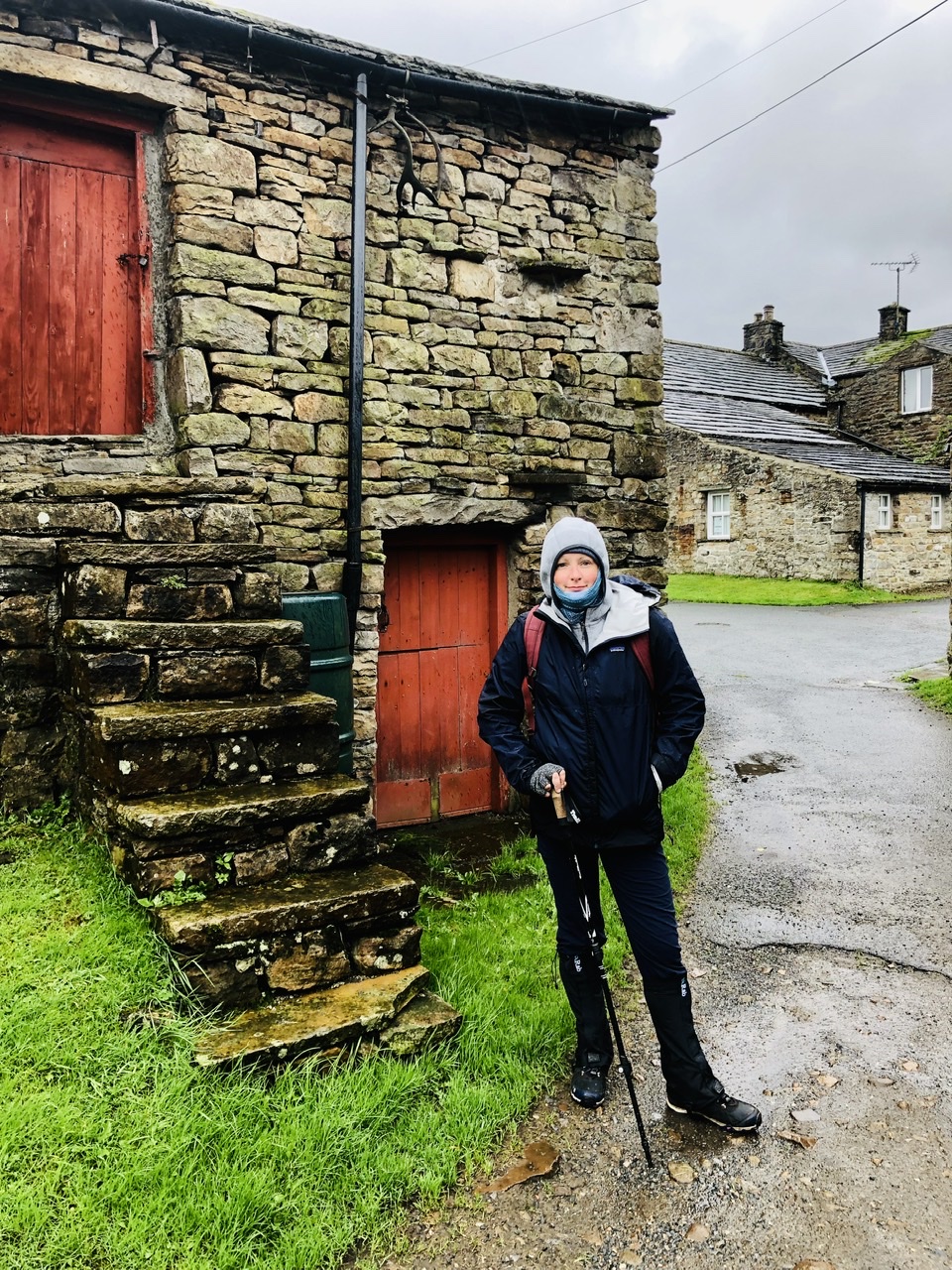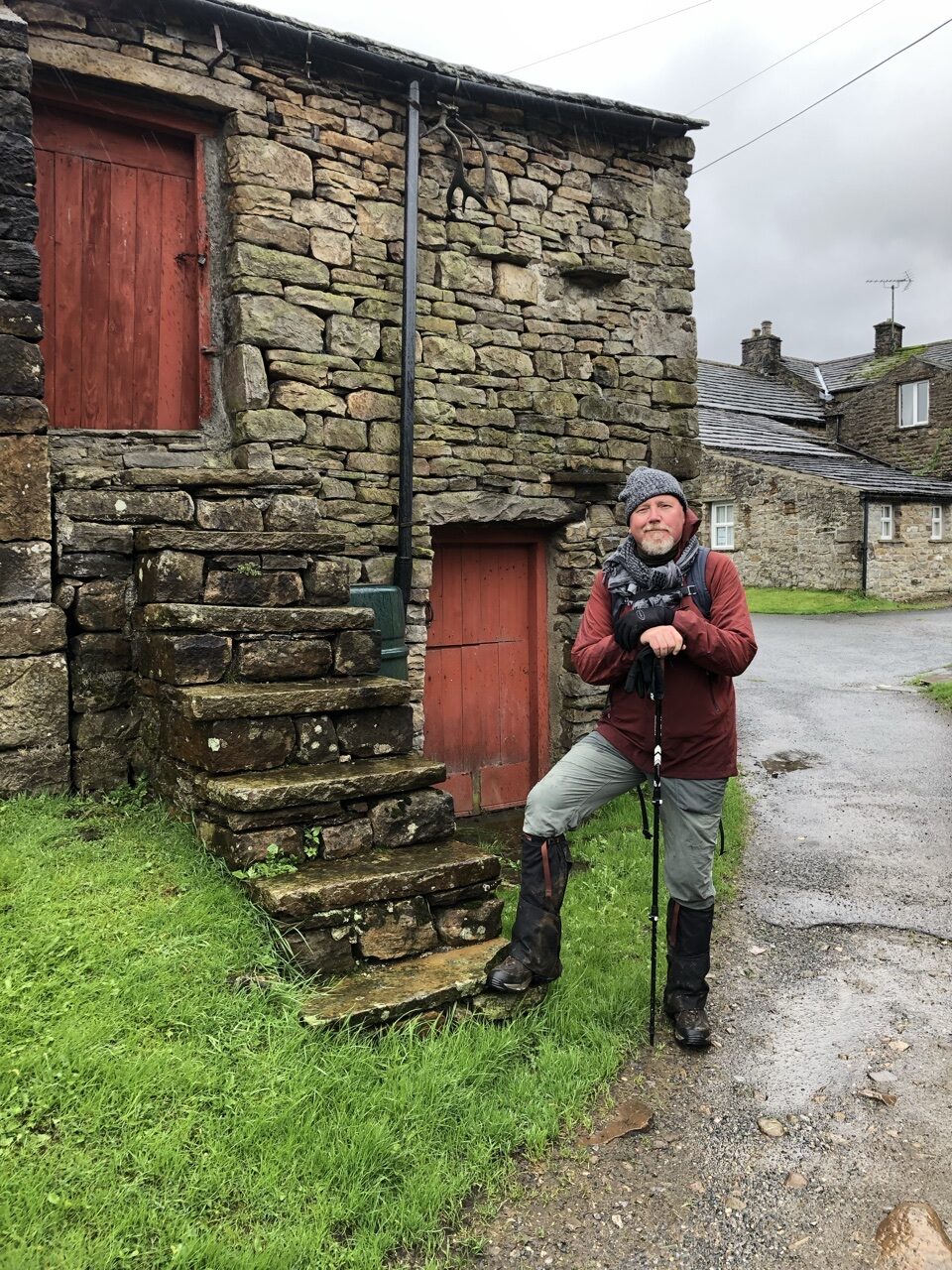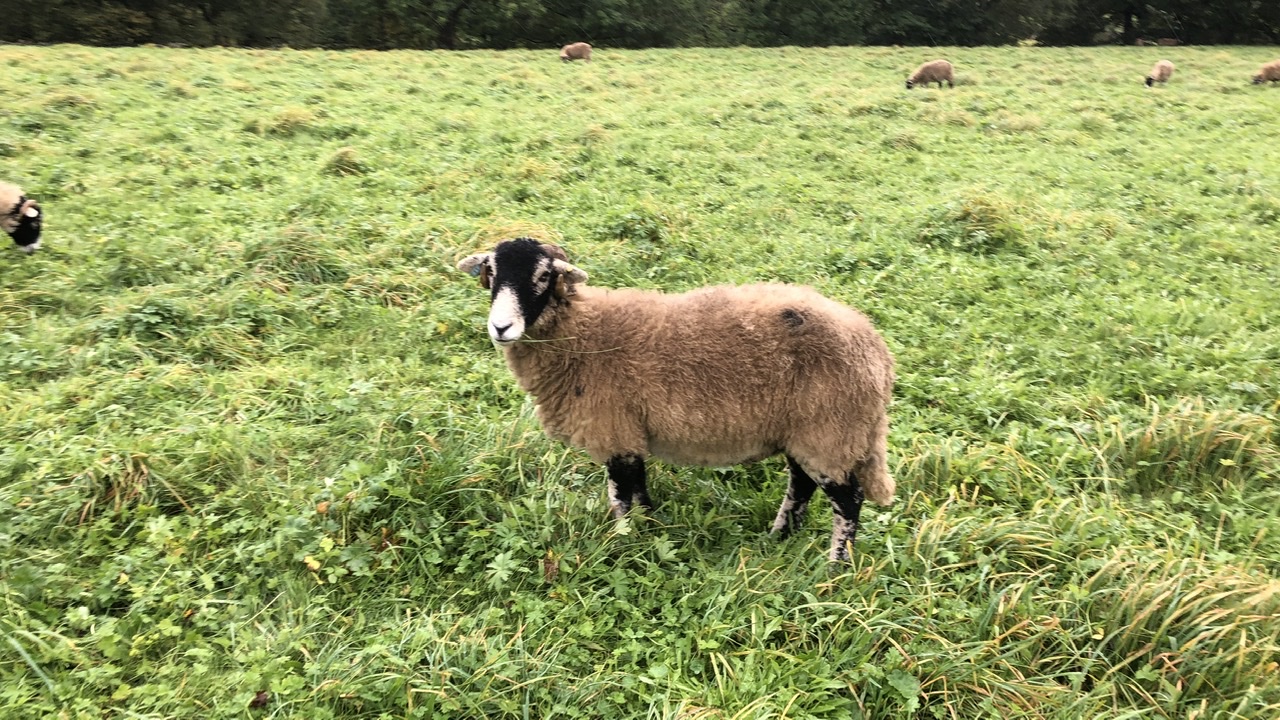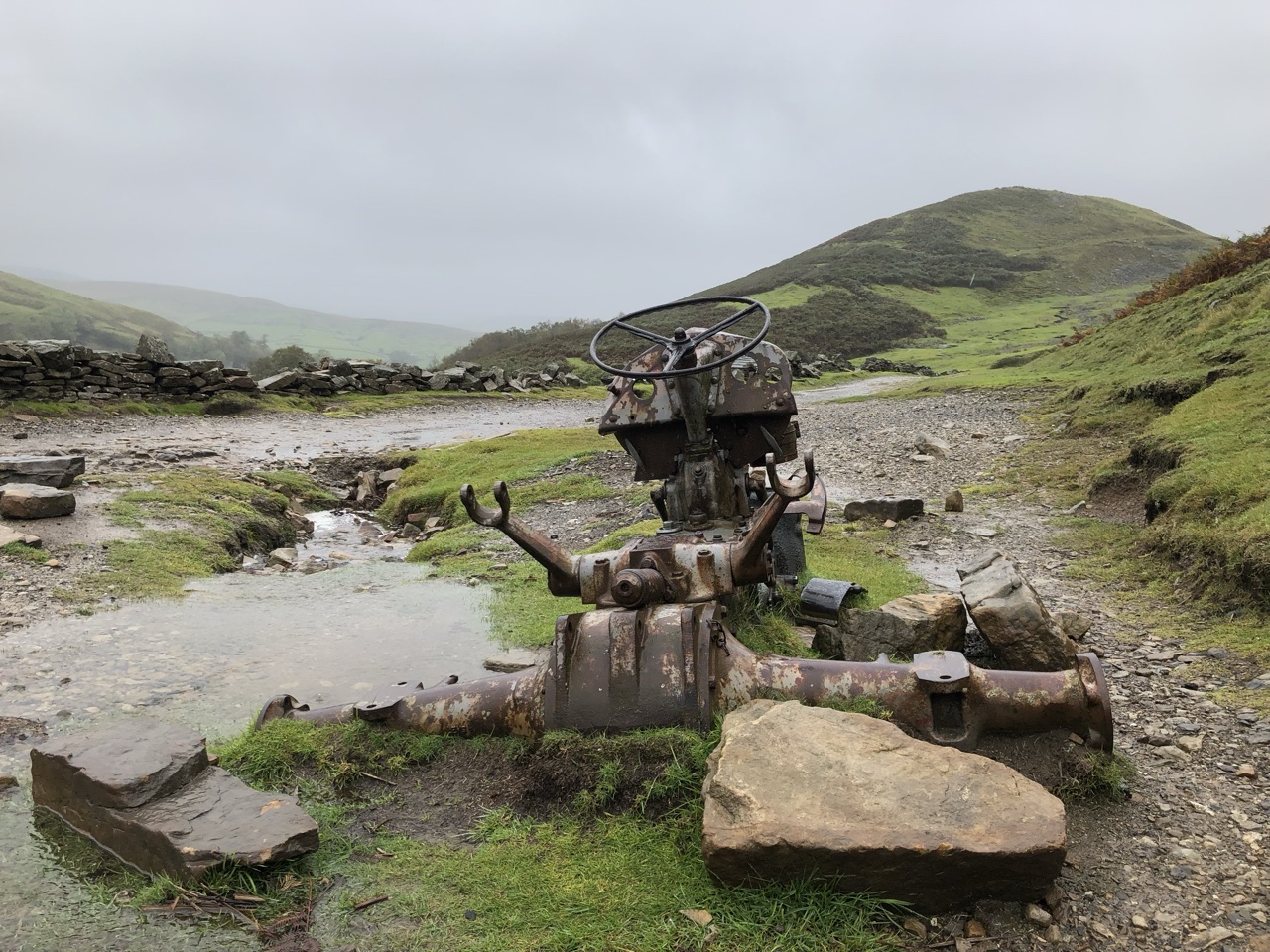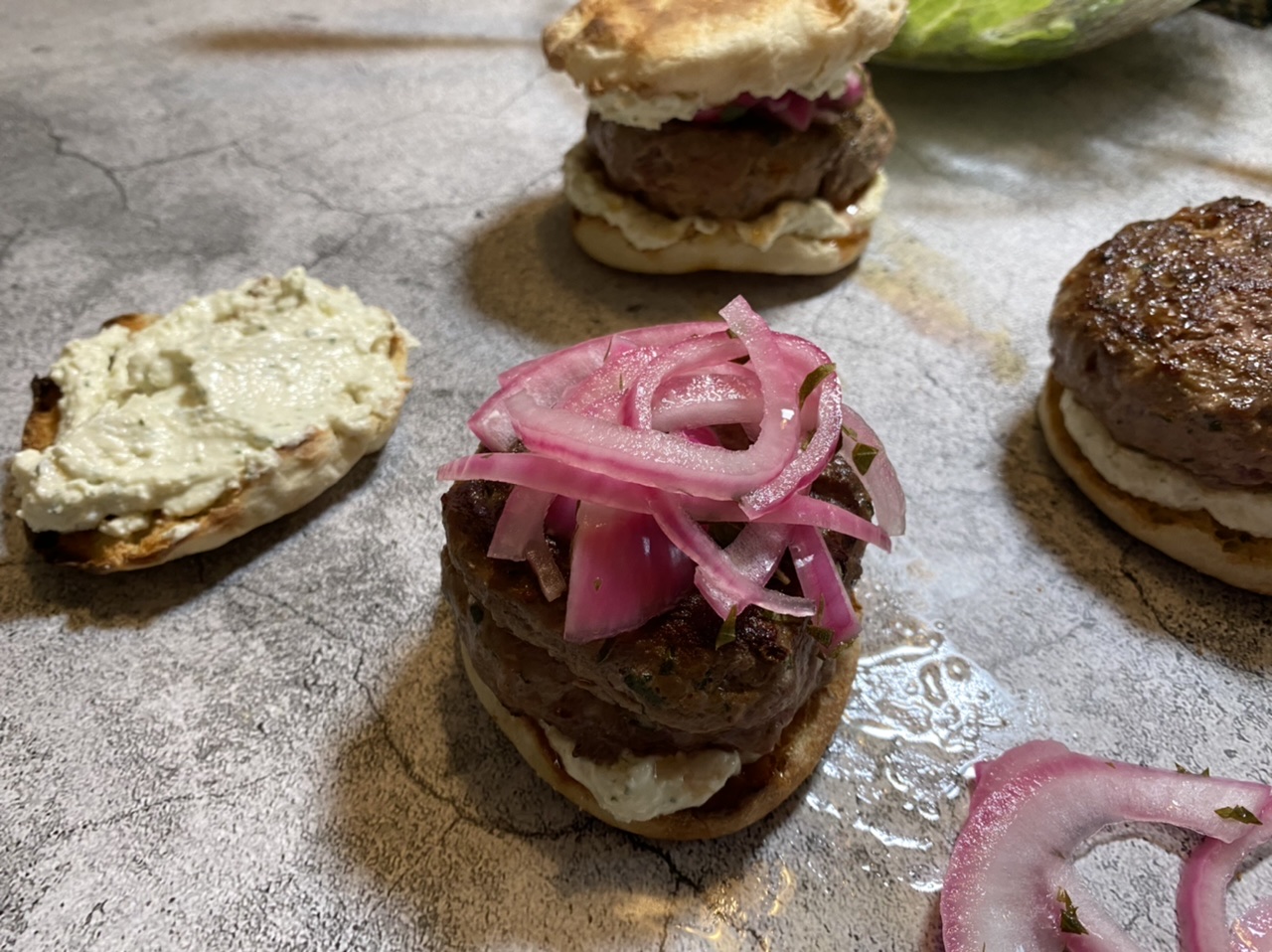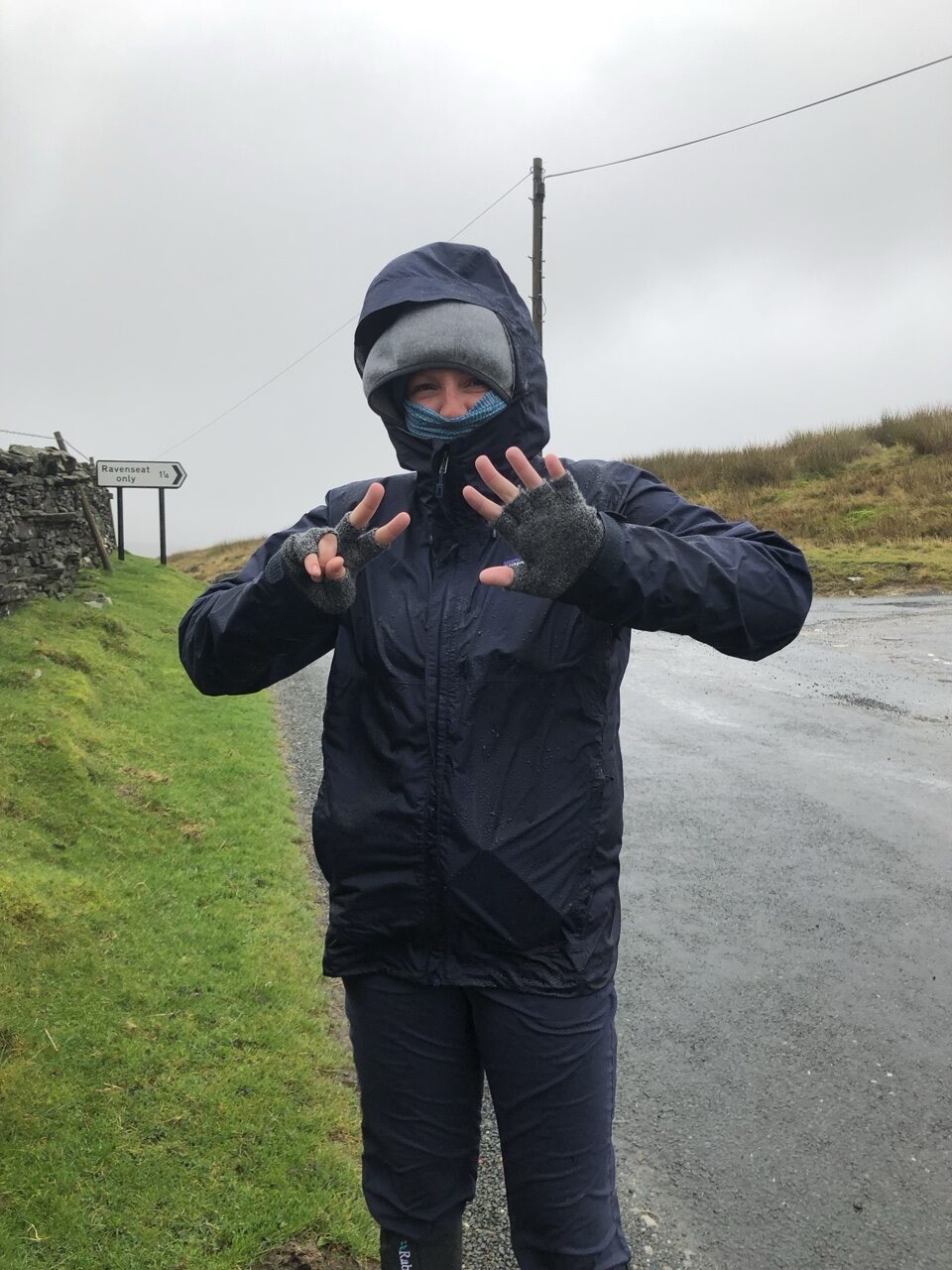
As I’ve said earlier, the weather alternated pretty consistently: rain, sun, rain, sun. Day seven, we woke to heavy, overcast skies and a firm, steady rain.
The path leading out of Kirkby Stephen takes you past the Nine Standards ~ nine giant cairns. However, because of the poor visibility in the hills, our B&B hosts advised us not to bother with the Nine Standards because we wouldn’t be able to see anything. They told us that the Nine Standards are only worth it on days that have clearer visibility.
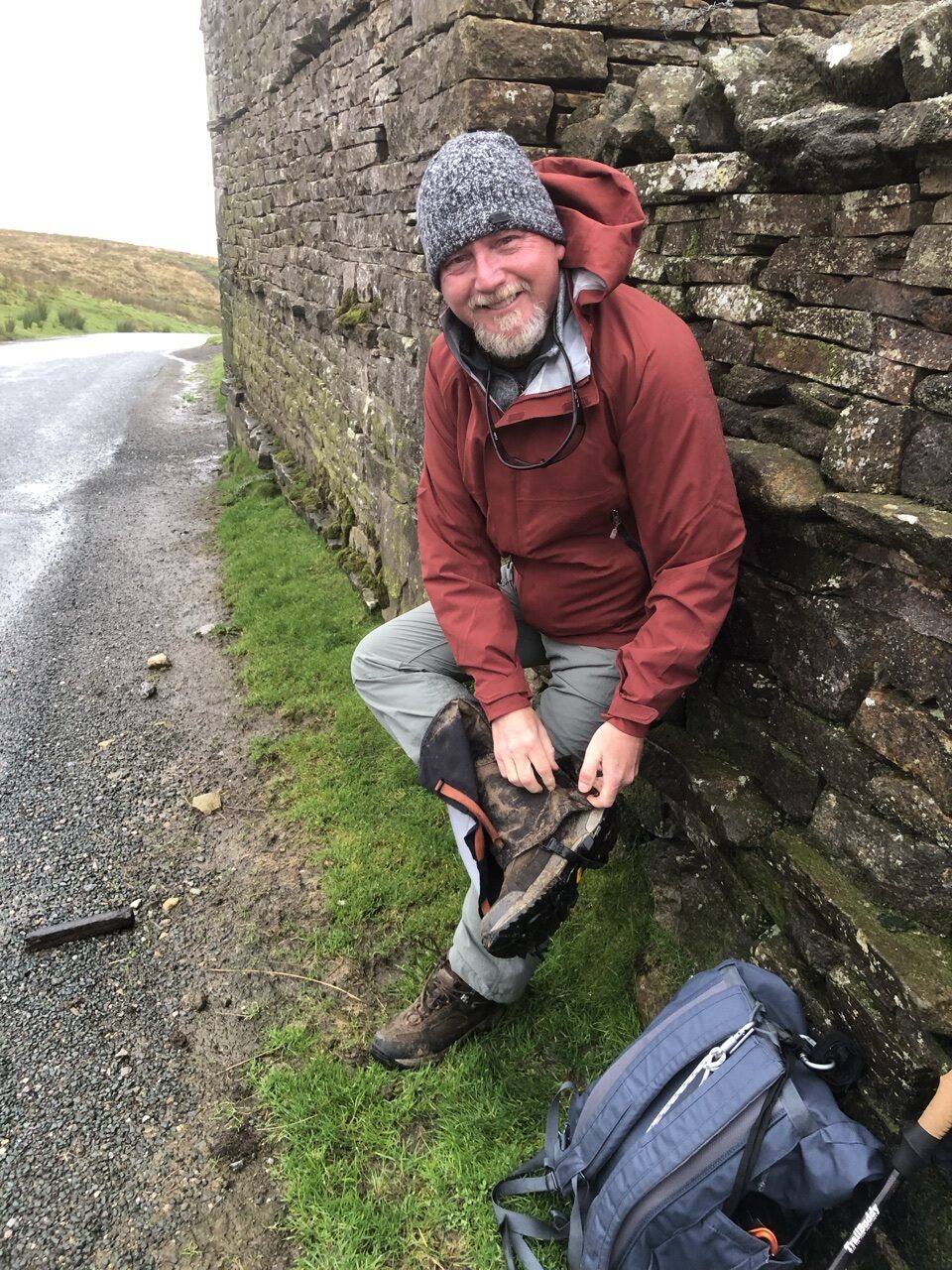
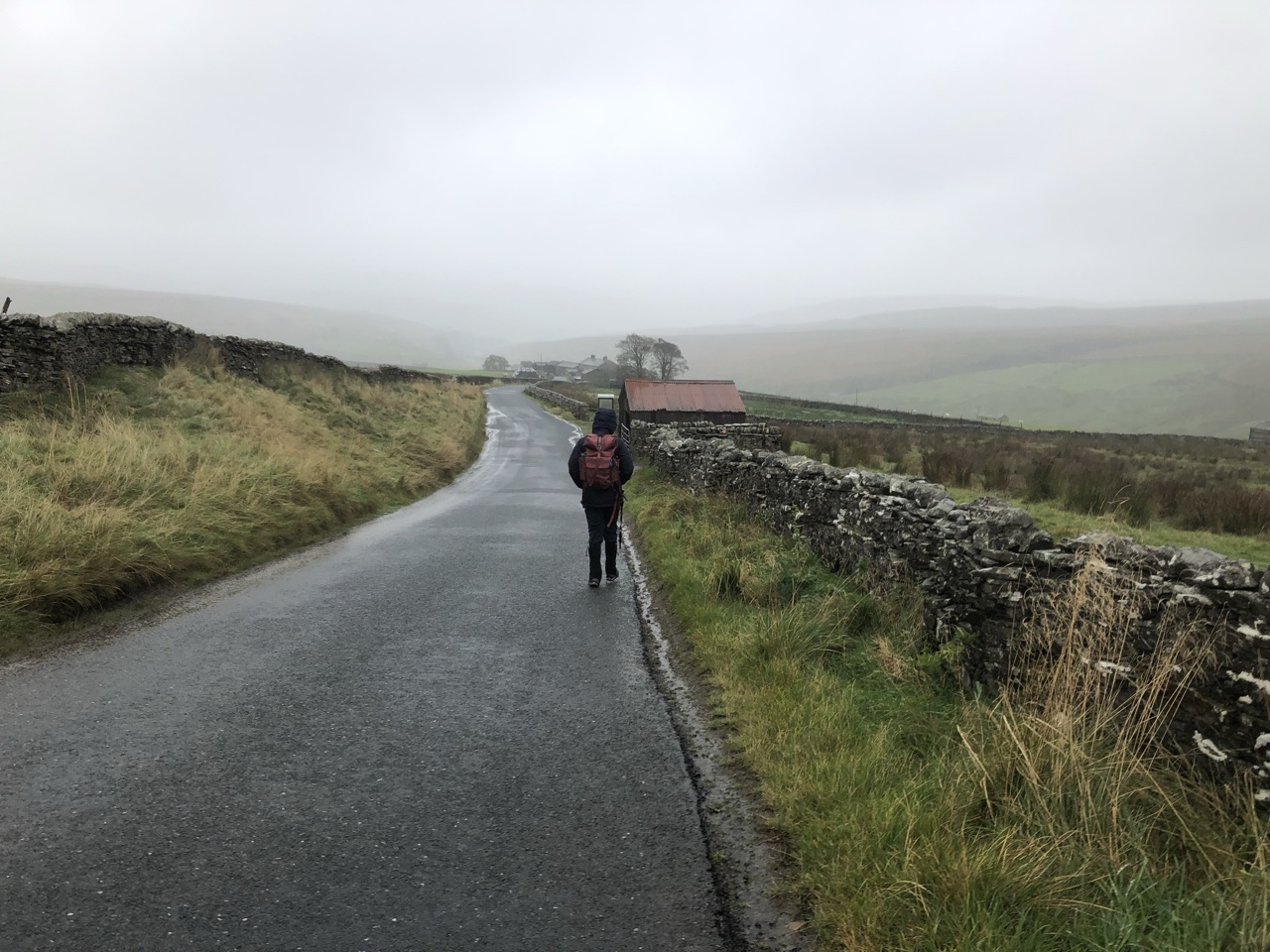
With that advice, we skipped around that section of trail, taking to the road instead and meeting up with the trail where it passed through Keld.
The wind was whipping with cold, biting air, and the rain came on and off with a gentle mist. As we came around a bend in the road, the first part of the valley of the Yorkshire Dales spread out before us, and we were awestruck.
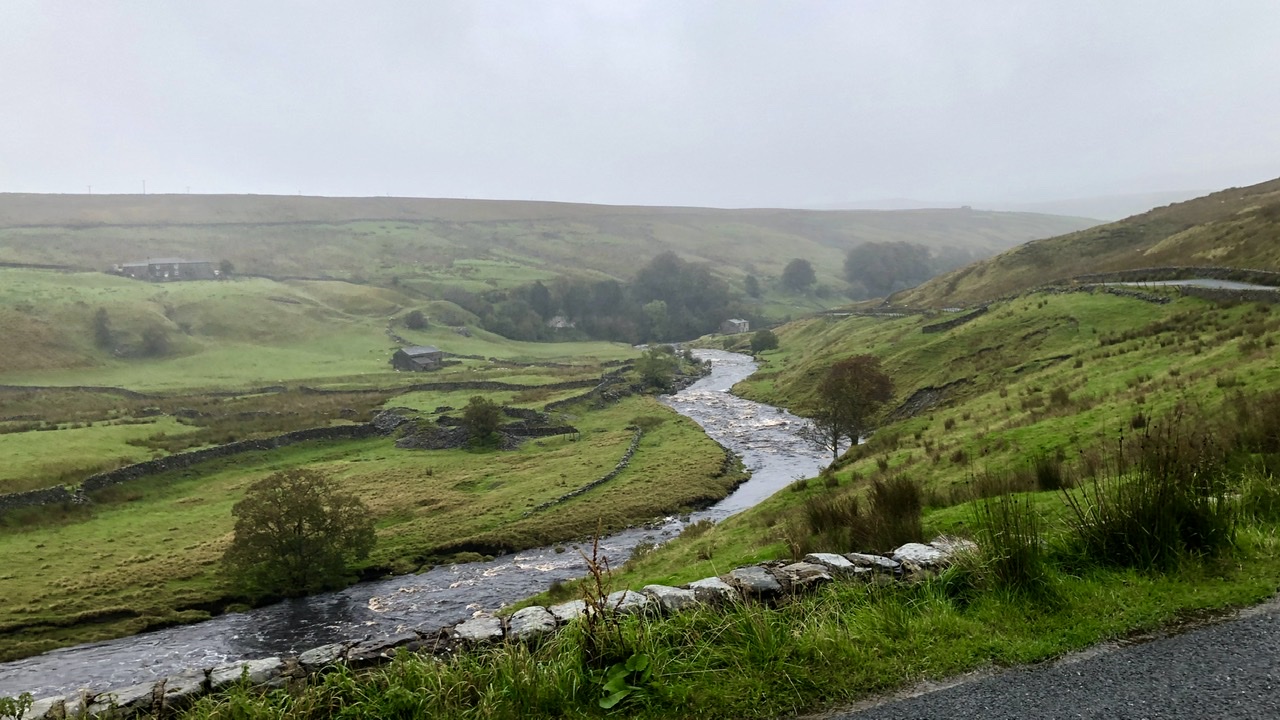
Dotted across the pastures were old stone buildings called cow’uses (cow-wuss-sus). These old “cow houses,” were positioned in the field to most easily harvest cow feed into the building and then house the cows during the winter. Some cow’uses were in crumbly ruins, some had been repaired and used for farm storage, while others had been renovated and turned into homes. The cow’uses ranged in size from small to large enough to make a comfortable home.
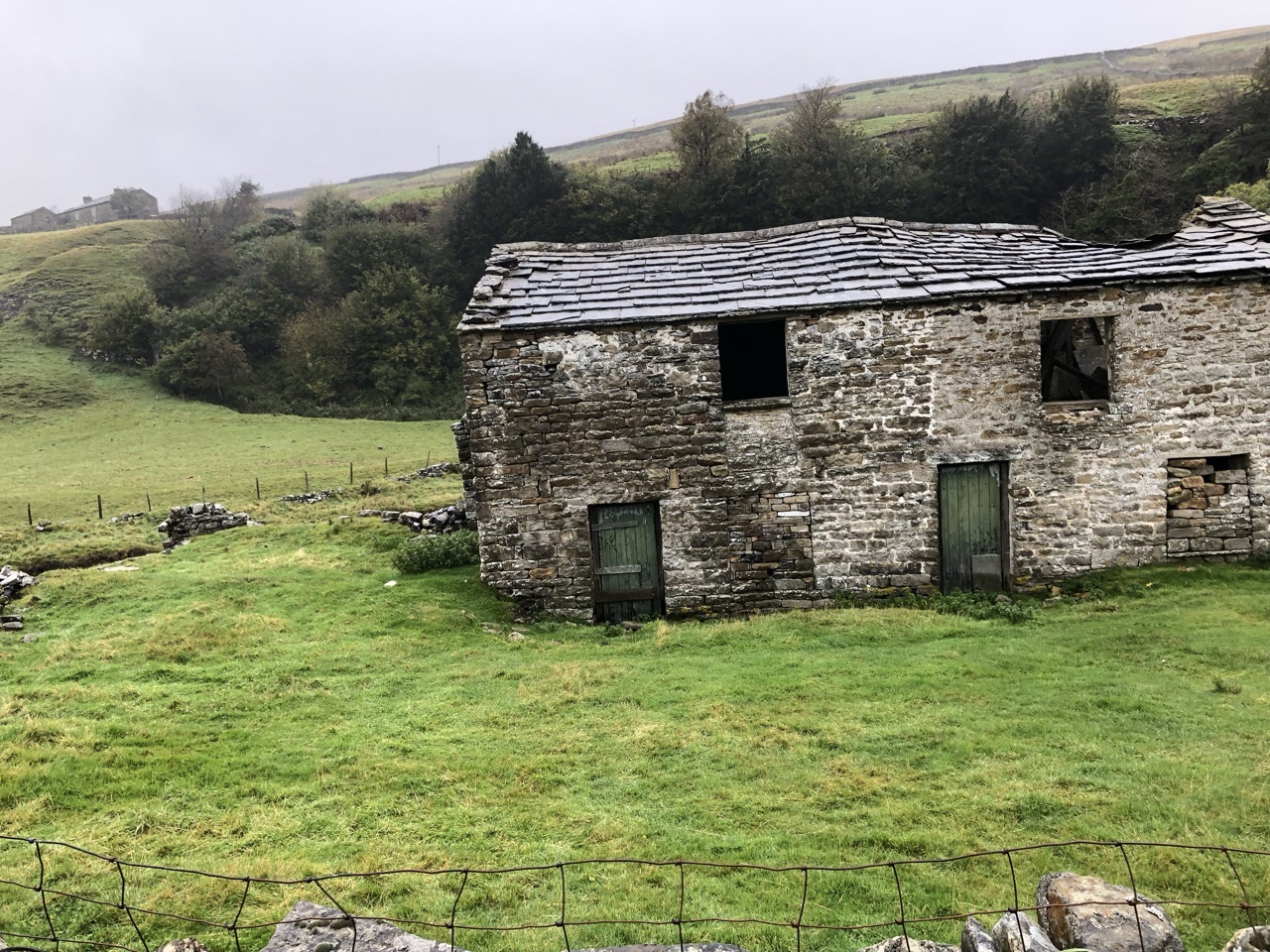
These pastures did not give the same feel as the pastures we had trudged through the past two days. Blanketed in a light fog, the buildings pulled images from the Bronte sisters or Jane Austin. With the River Swale rushing by to the left of us, we hugged the road toward Keld (or Kelp, as Ron called it). Pasture upon pasture held a different and beautiful stone house and stone cow’us.
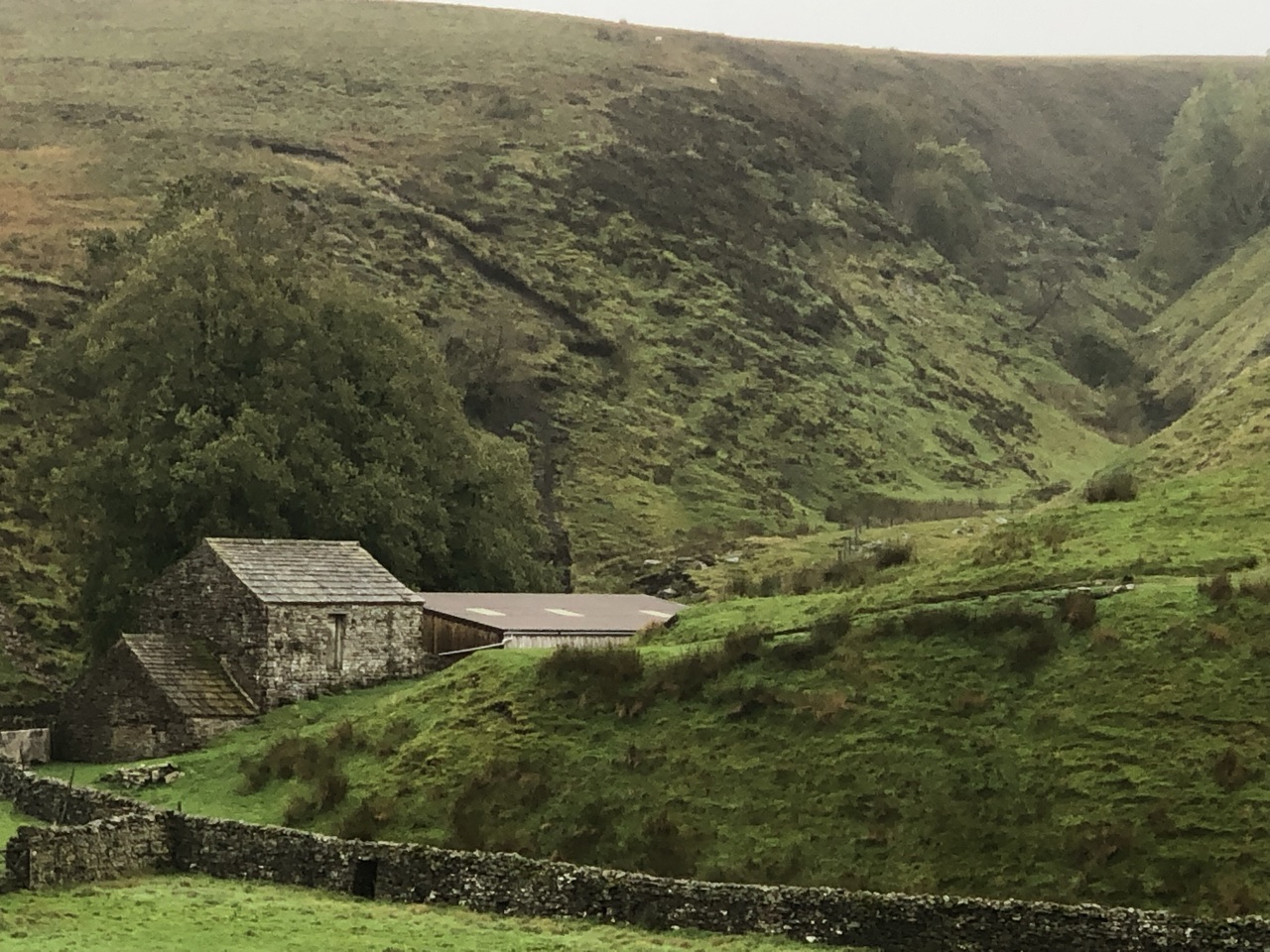
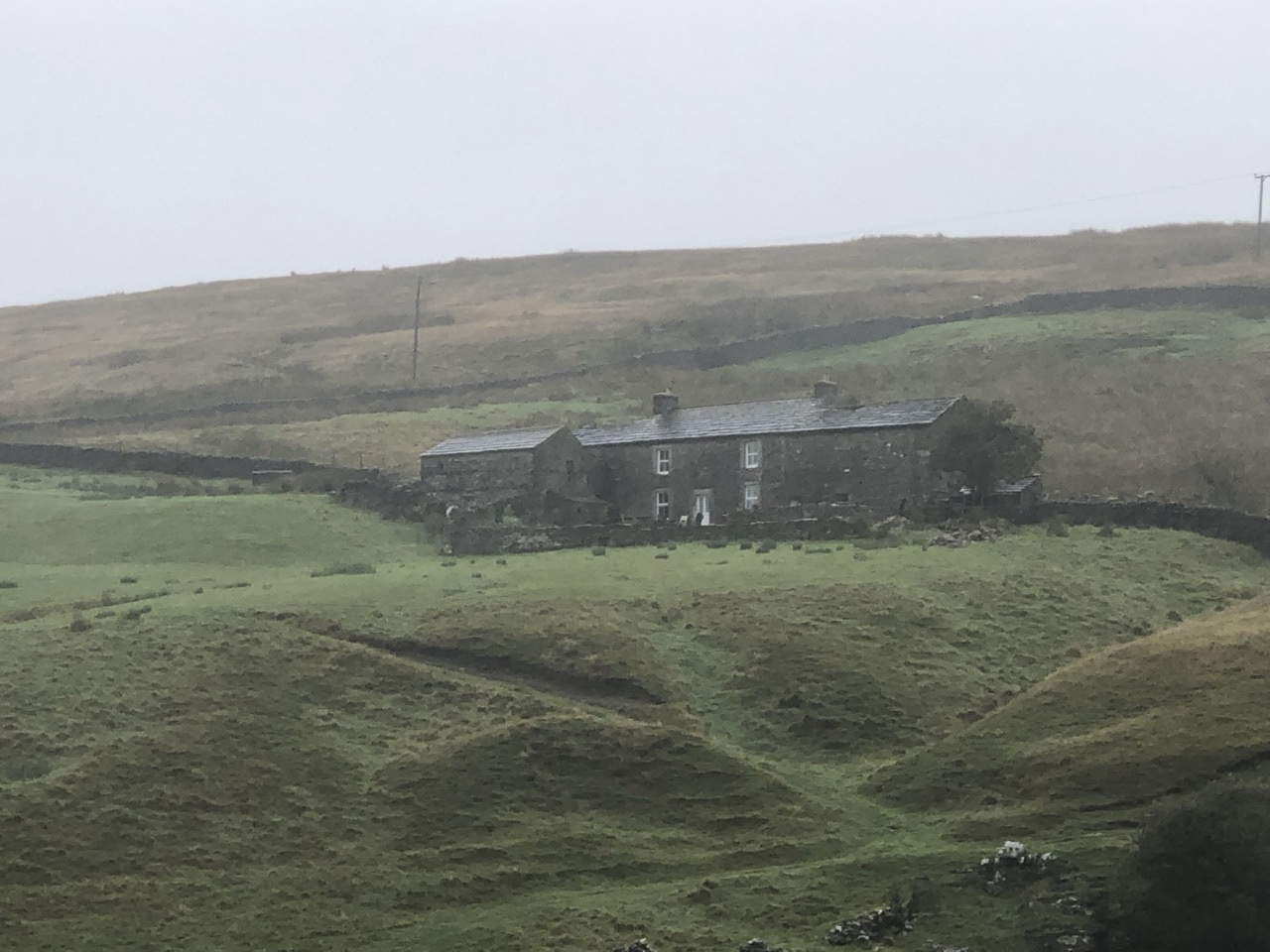
Entering into the Yorkshire Dales was like entering the Shire in Lord of the Rings. There was a quiet, peaceful feeling to life in the Dales, as if people kept a slower more tranquil existence living along the river in the Swale valley. The landscape was a saturated green that one only imagines being in England or Ireland.
Coming upon Keld from above, the entire hamlet consisted of stone buildings, with the sky dotted with stone chimneys. It felt like stepping back in time four hundred years.
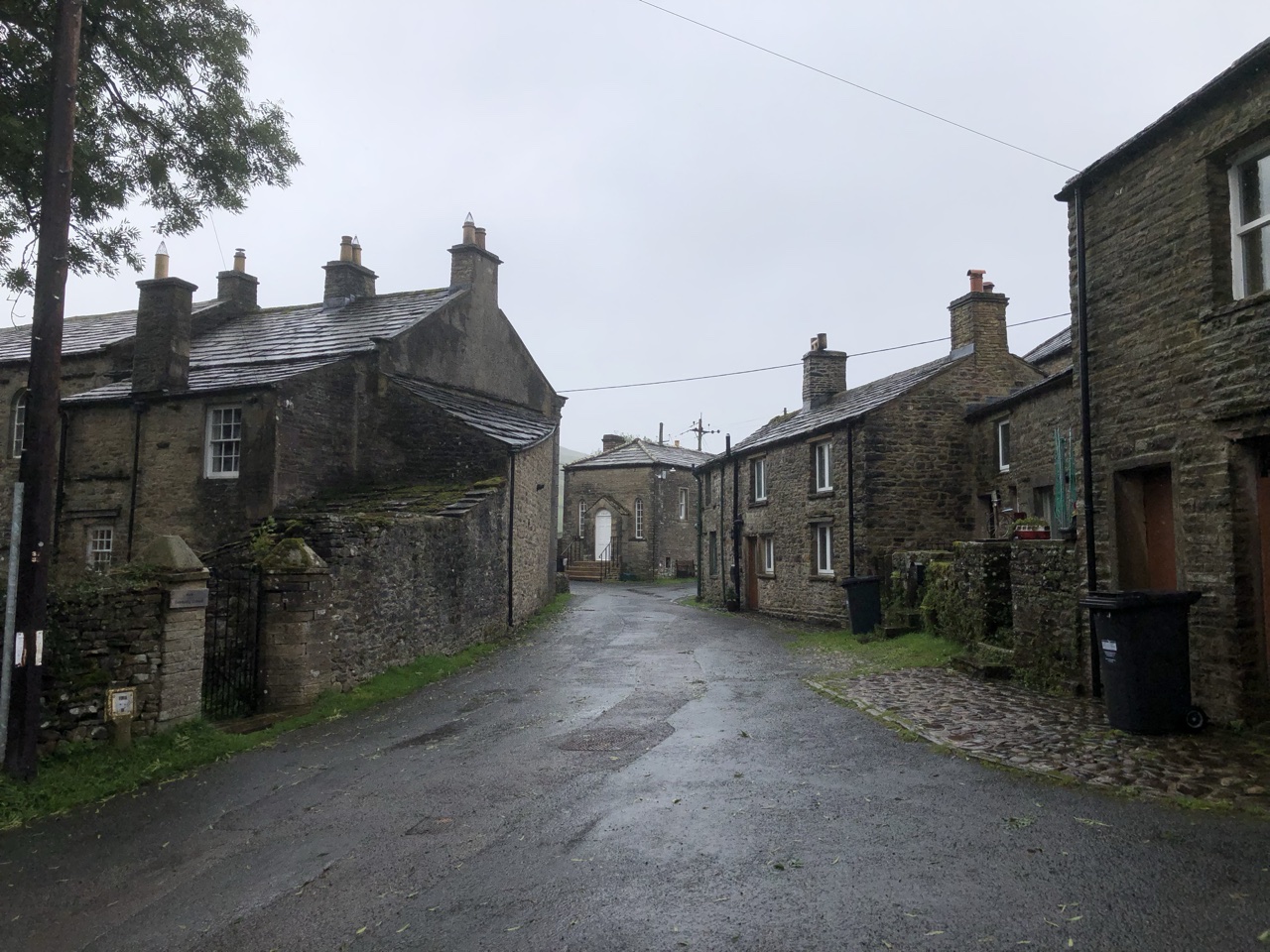
Although cars were parked, there wasn’t another soul in sight. The path picked back up in the northeast corner of town, with a packed dirt path that led to a stone and brick pathway slanting down toward the river.
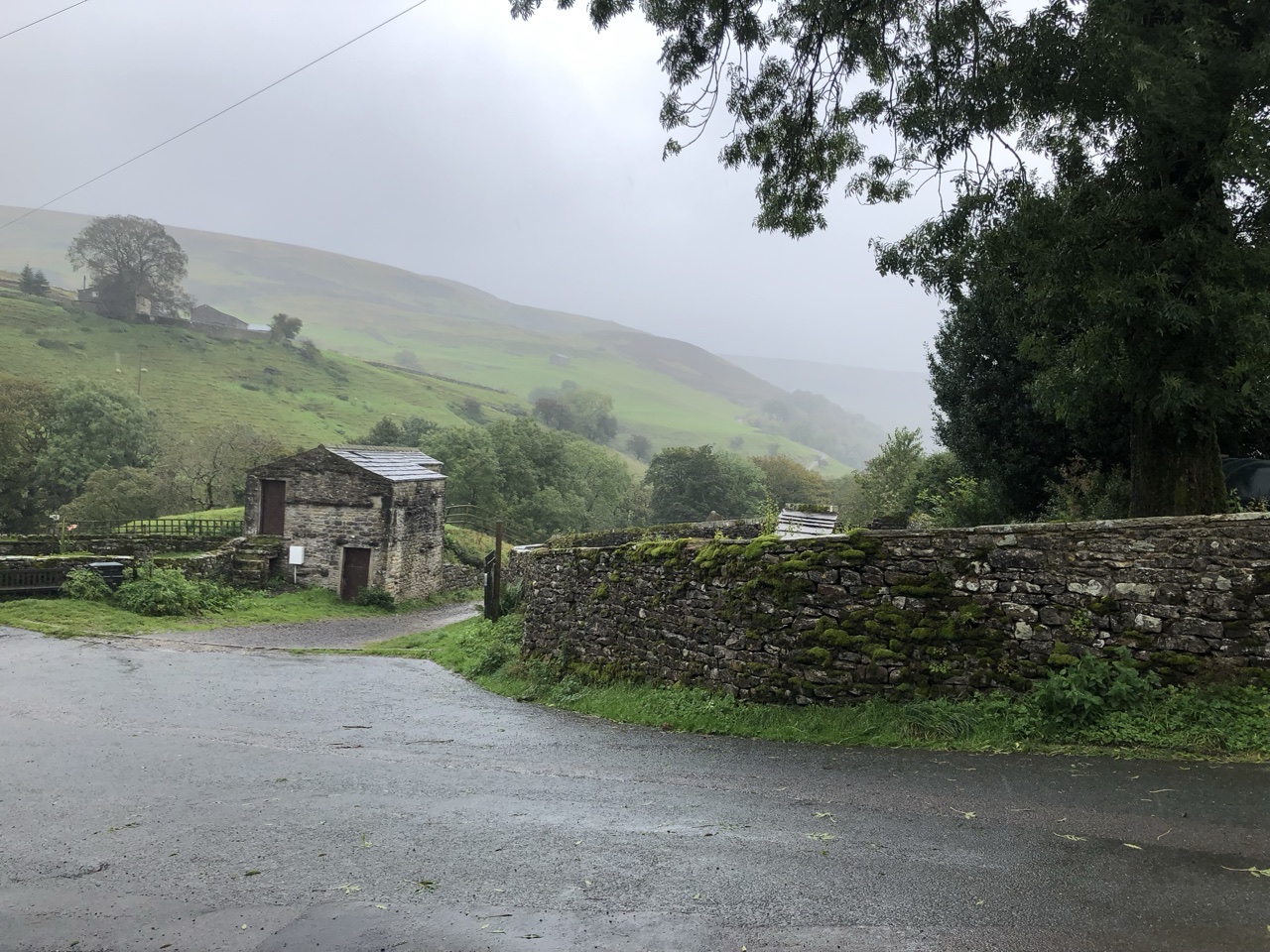
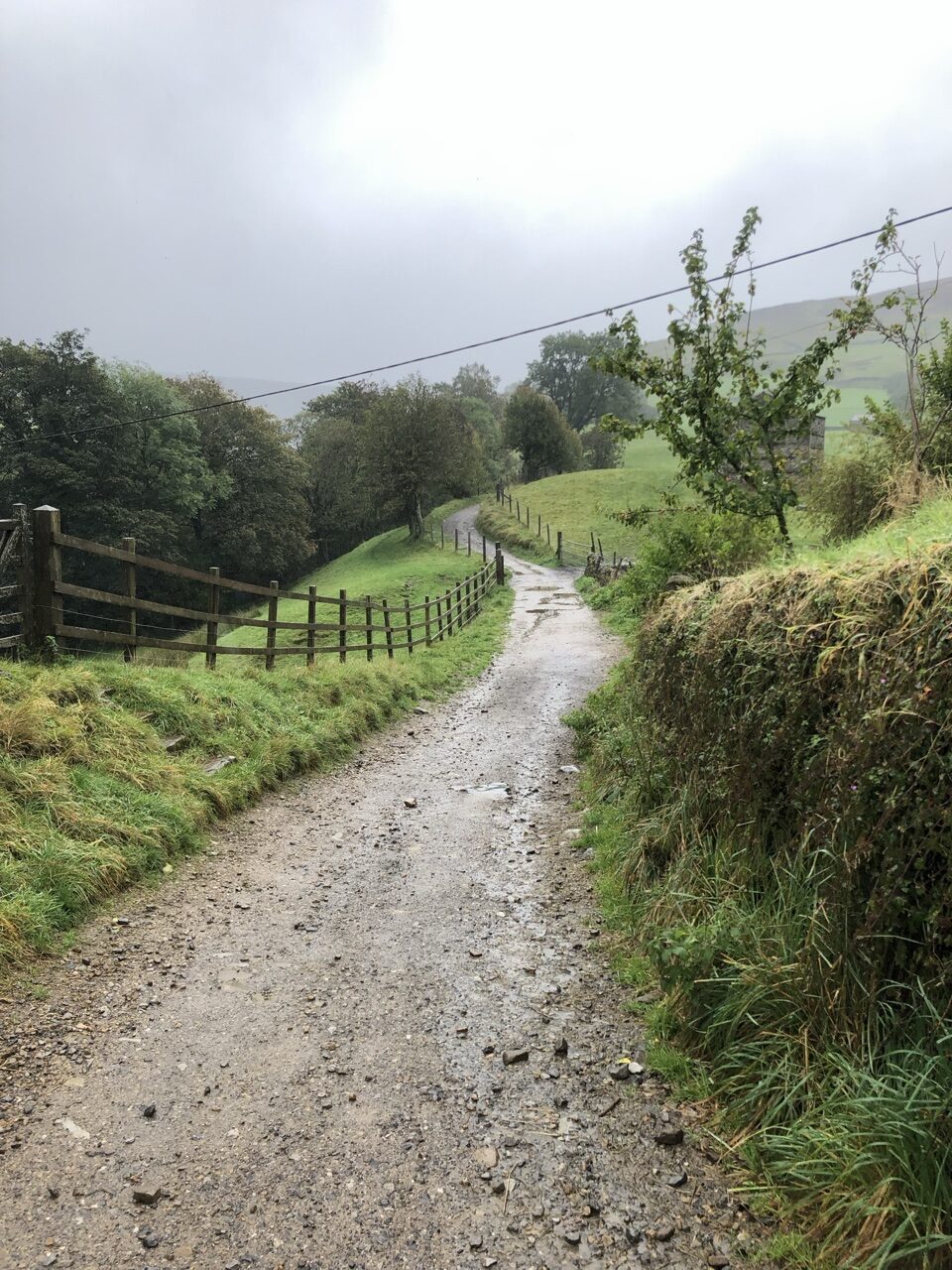
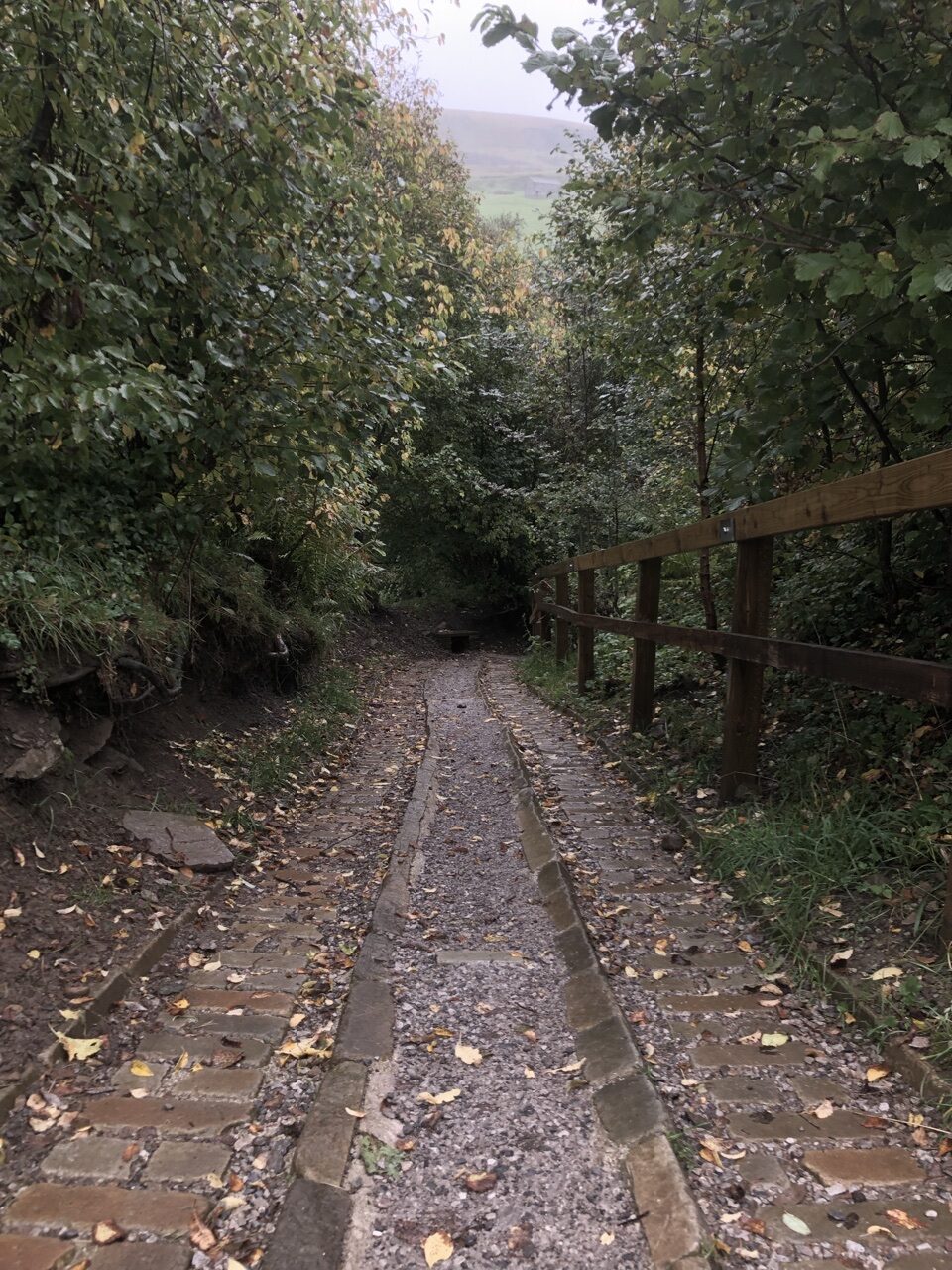
A bridge led us over the roaring River Swale to an open pasture and a large waterfall to our right that fed into the river. If the day had been dry, we would have stopped to watch the waters join, peaceful in our solitude. Yet, at the same time, the rain made it almost romantic, giving a mystique to the world we were entering.
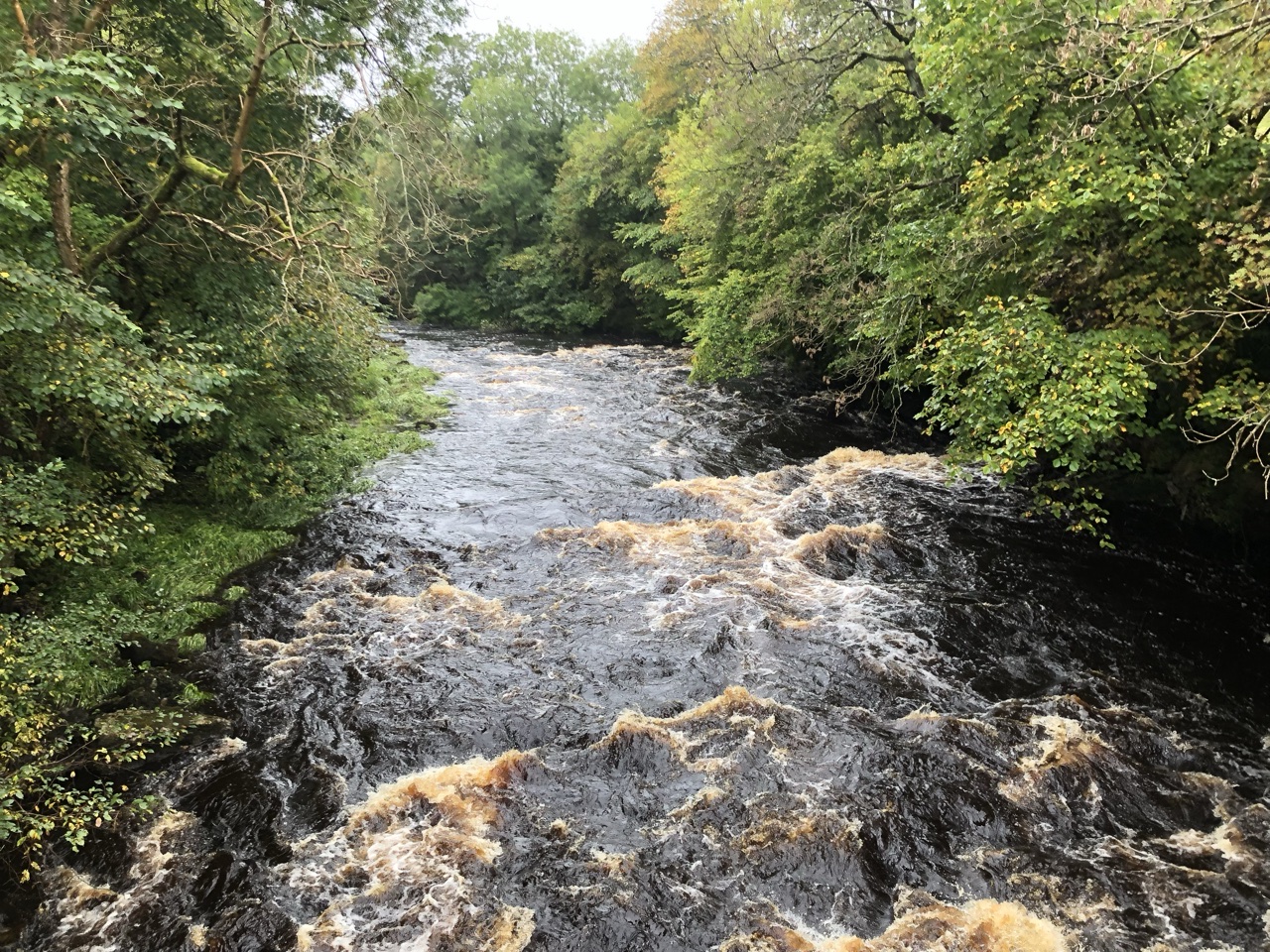
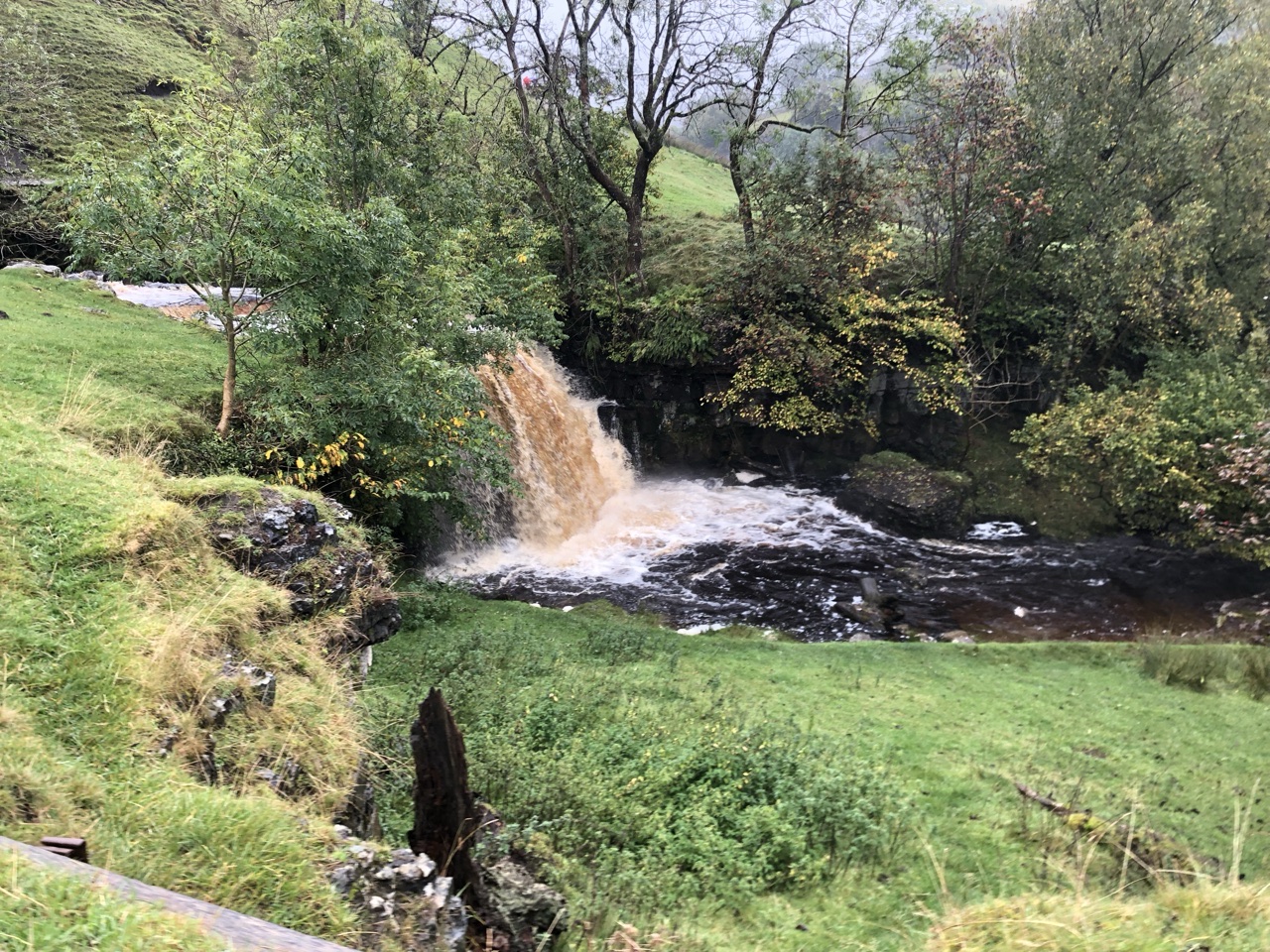
Before us, the path split. The path to the left went up a steep hill, the high path that went directly to Reeth. As we were stopping at Muker, our path was to the right, hugging the River Swale. The elevation rose, and the river below us wove far into the distance.
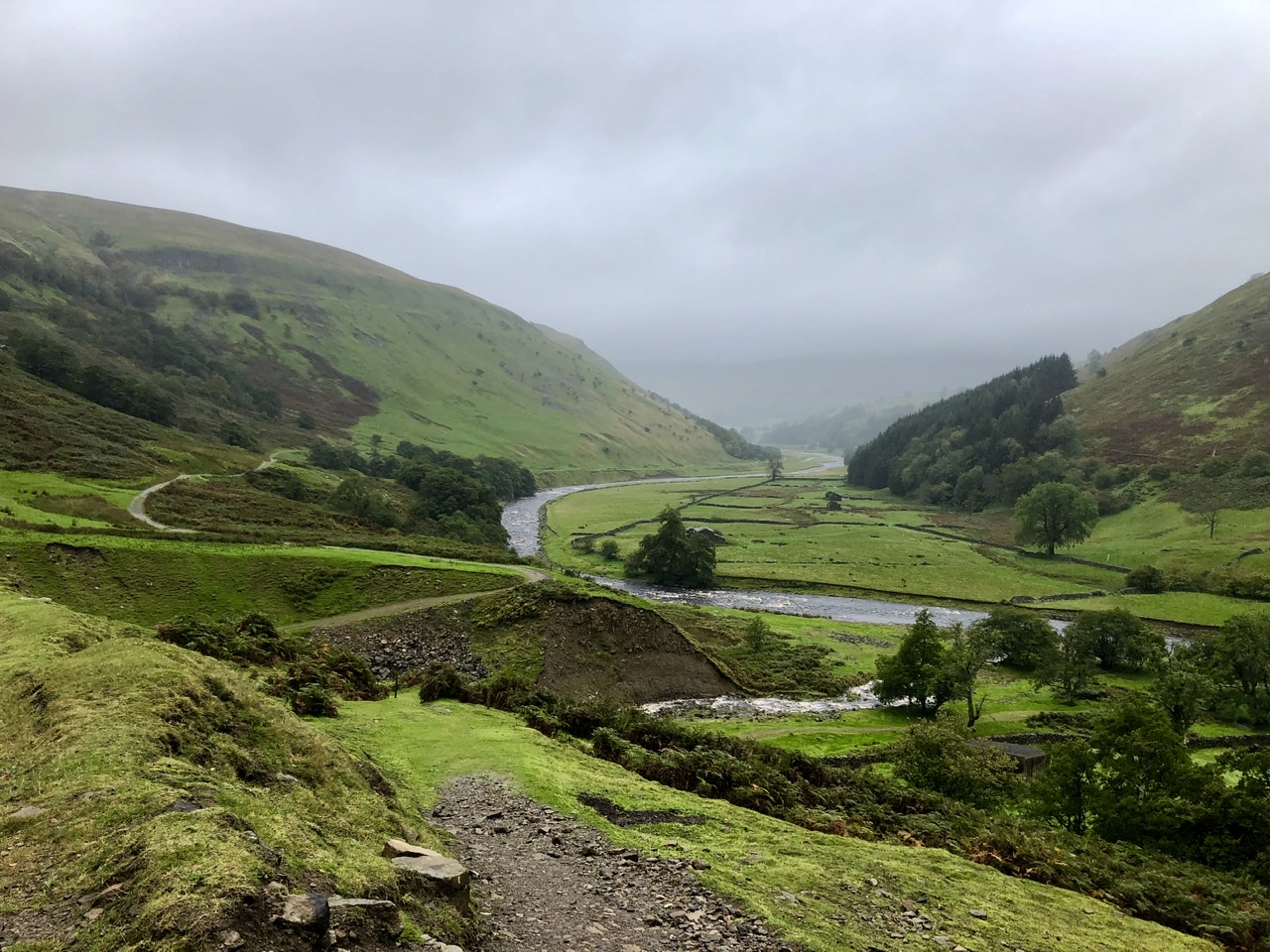
Shortly after leaving Keld, we passed the halfway mark across England. Seven days and halfway there. Although it’s not a tradition, as we walked, we looked for a rock that would represent the halfway mark.
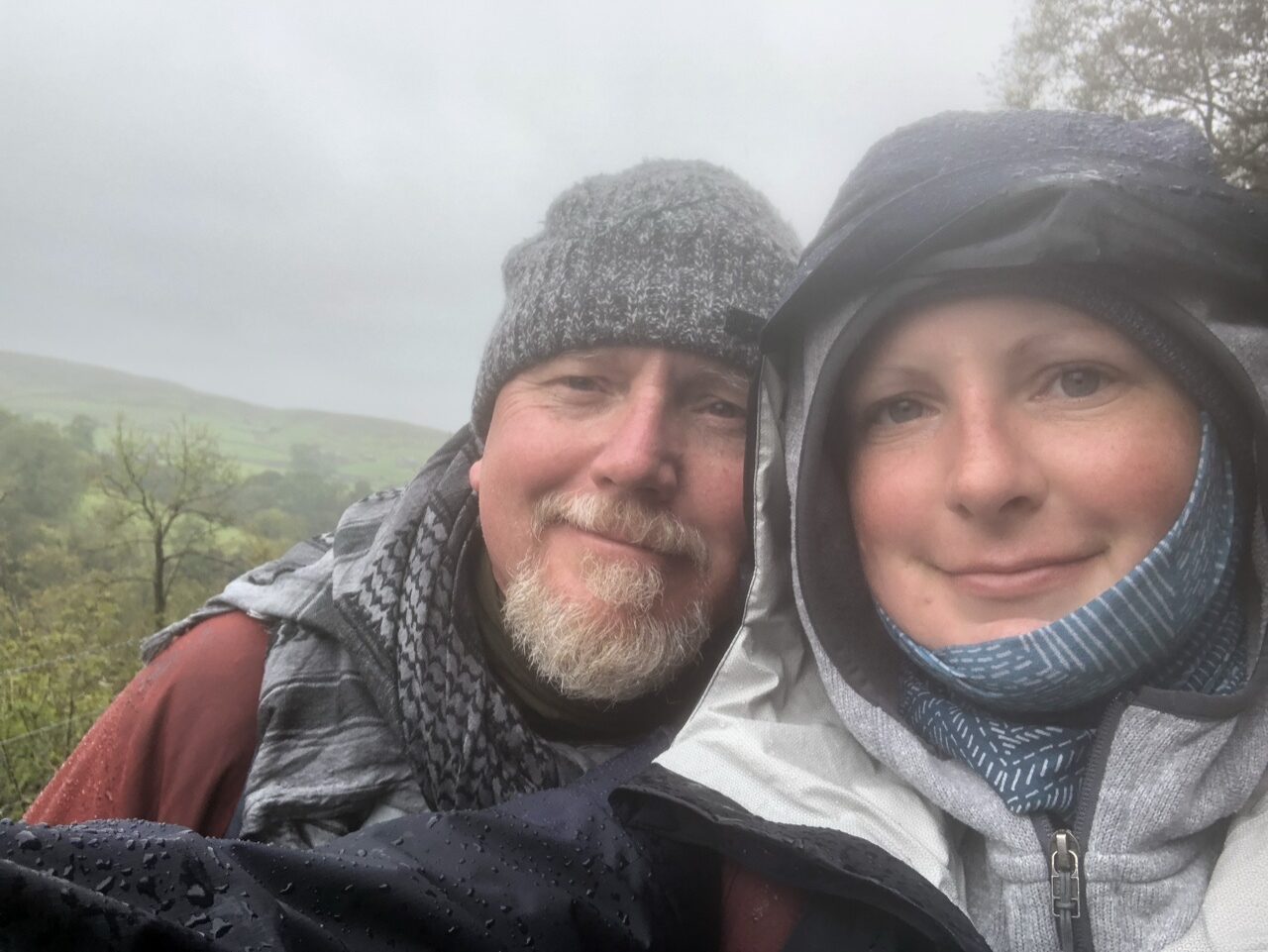
The next couple of miles was on a packed stone path. Occasionally, a stone and wood bridge would take us over water draining from the mountains in the Dales.
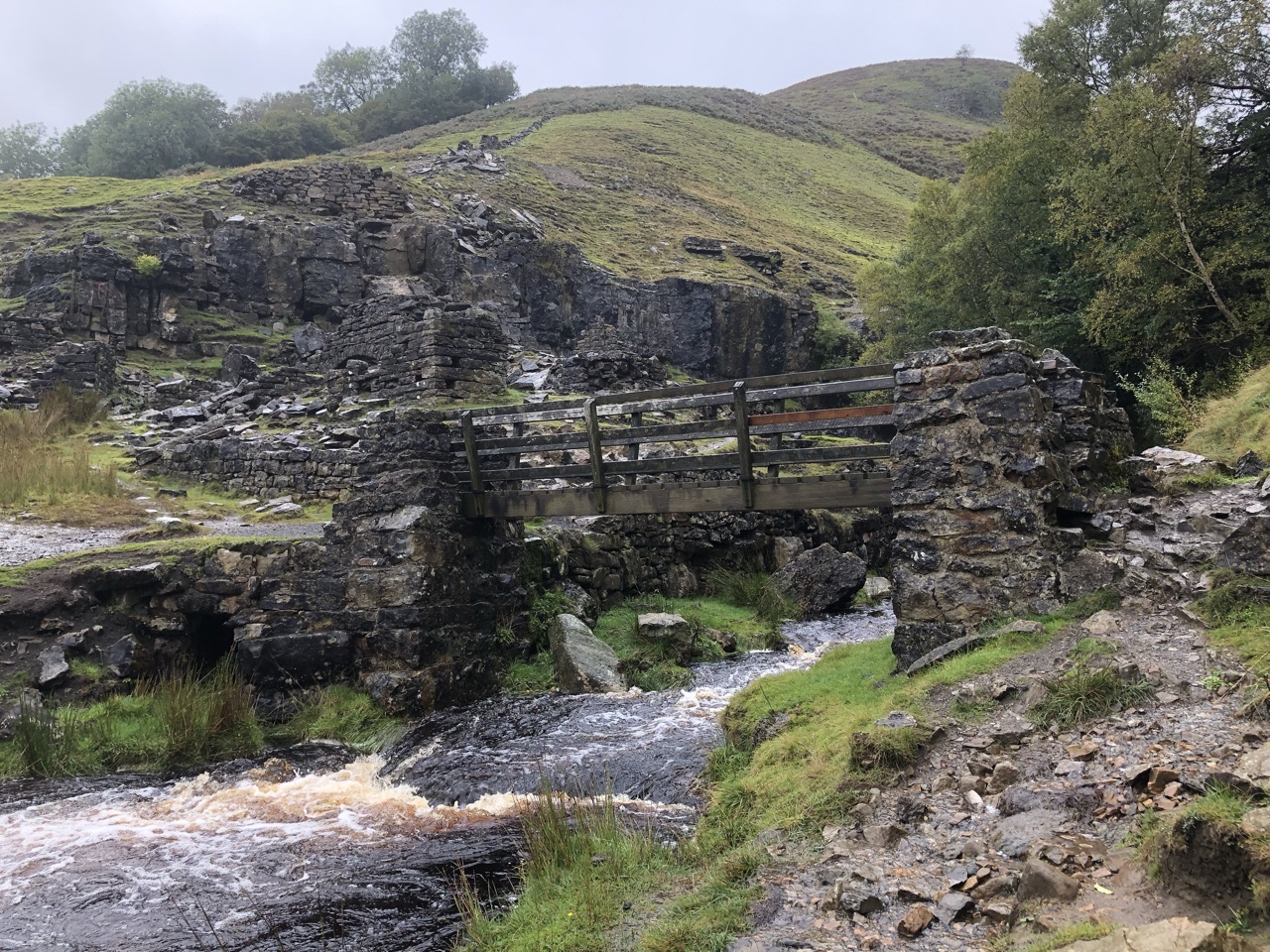
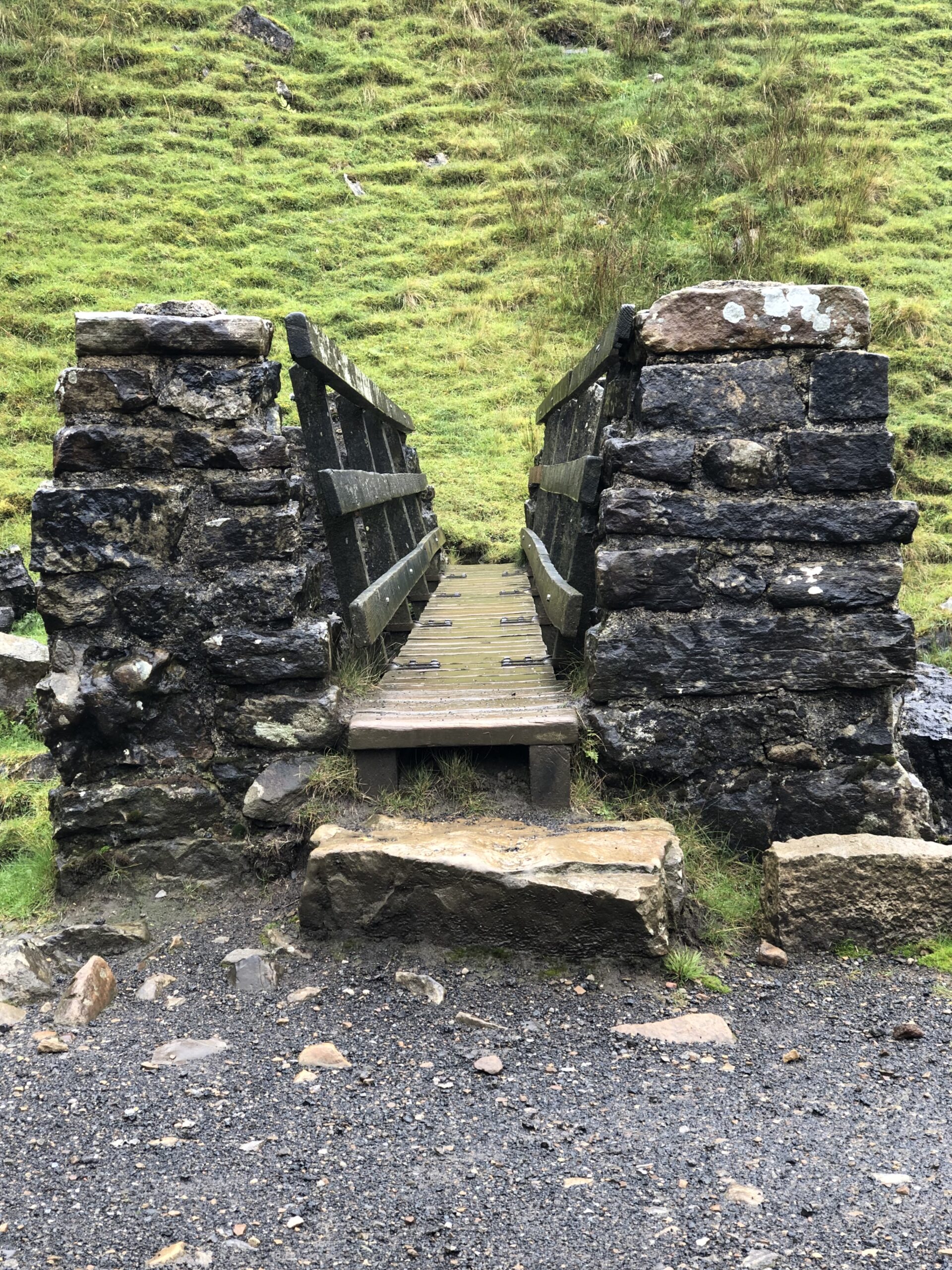
Nearing Muker, the terrain gently brought us back down to the river. A path cut back to the right, and another bridge brought us back over the River Swale.
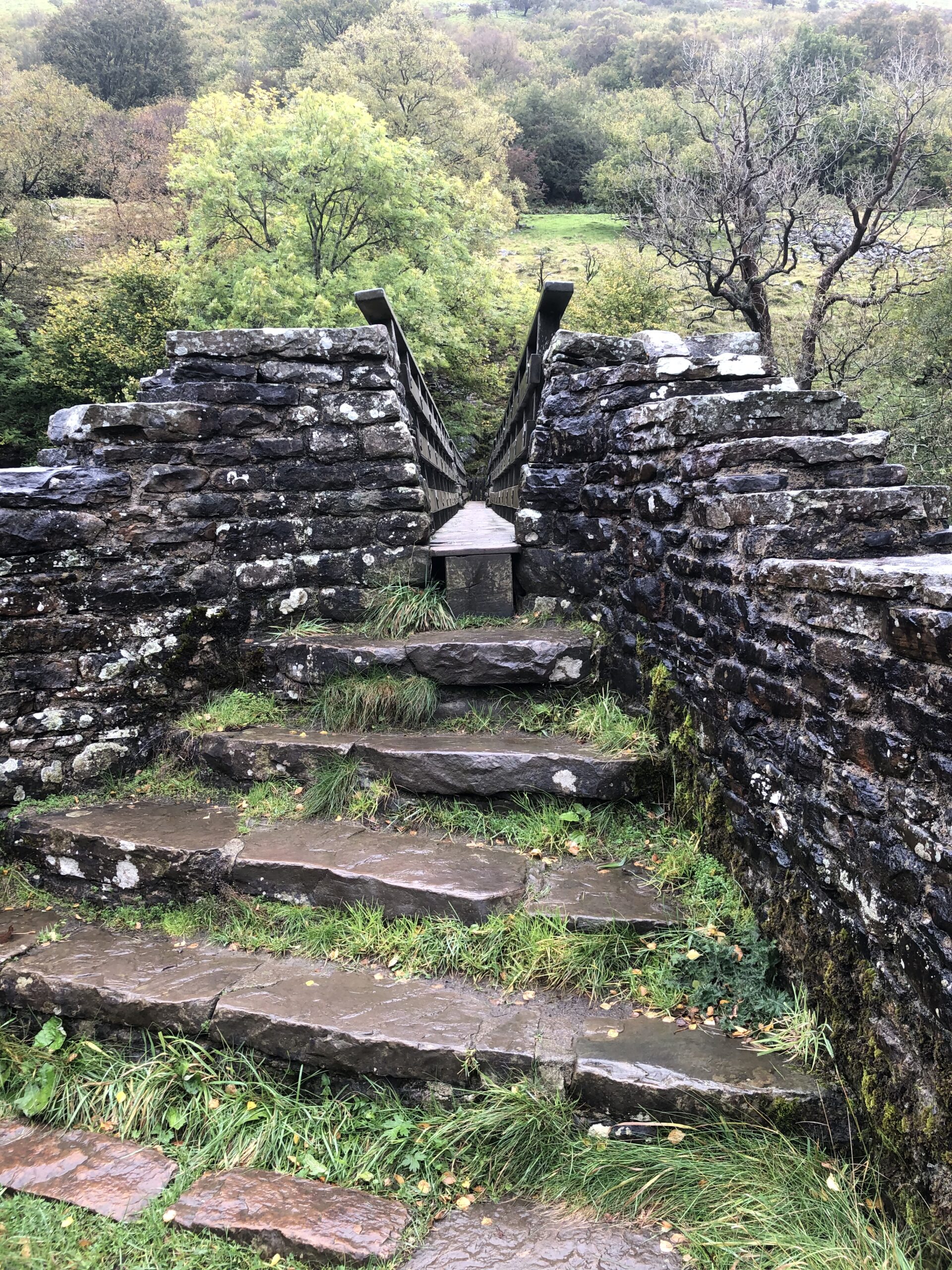
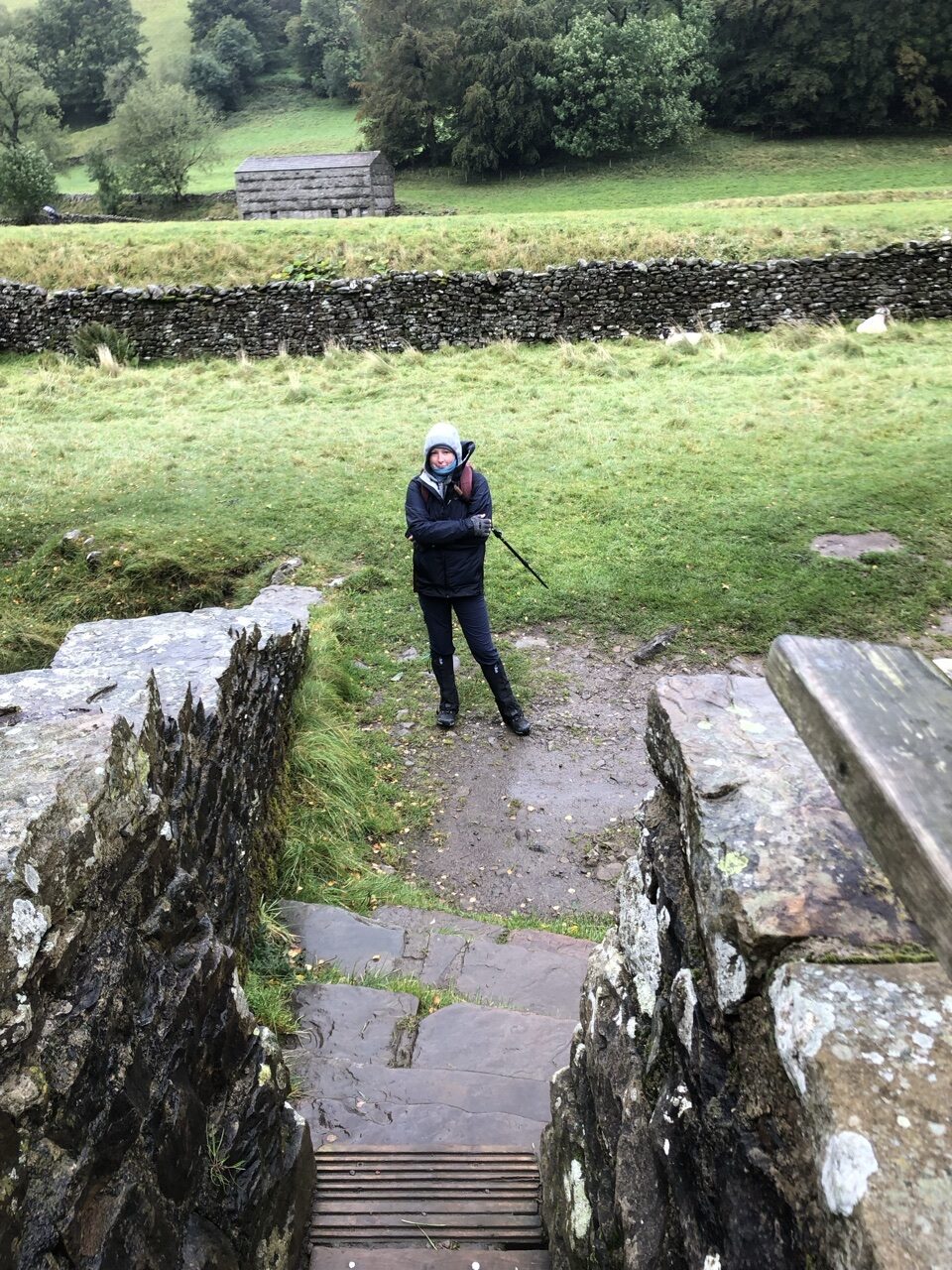
To our right, a small gate allowed us into a pasture that led left toward Muker. This was the first pasture we had encountered with a small stone slab pathway for us to walk upon. It was such a nice treat to be able to cut through a pasture without dodging mud, or muck, or hidden bogs.
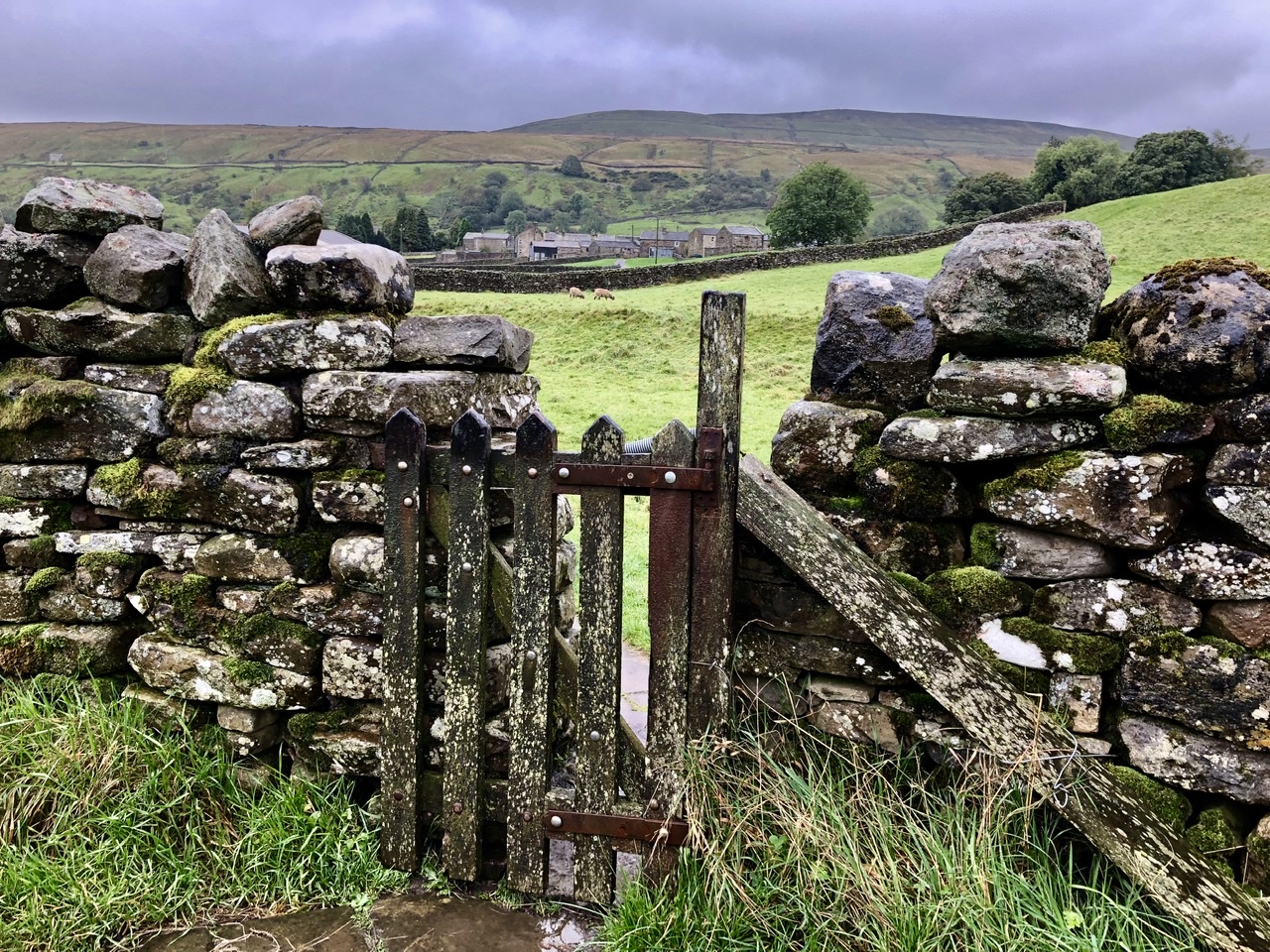
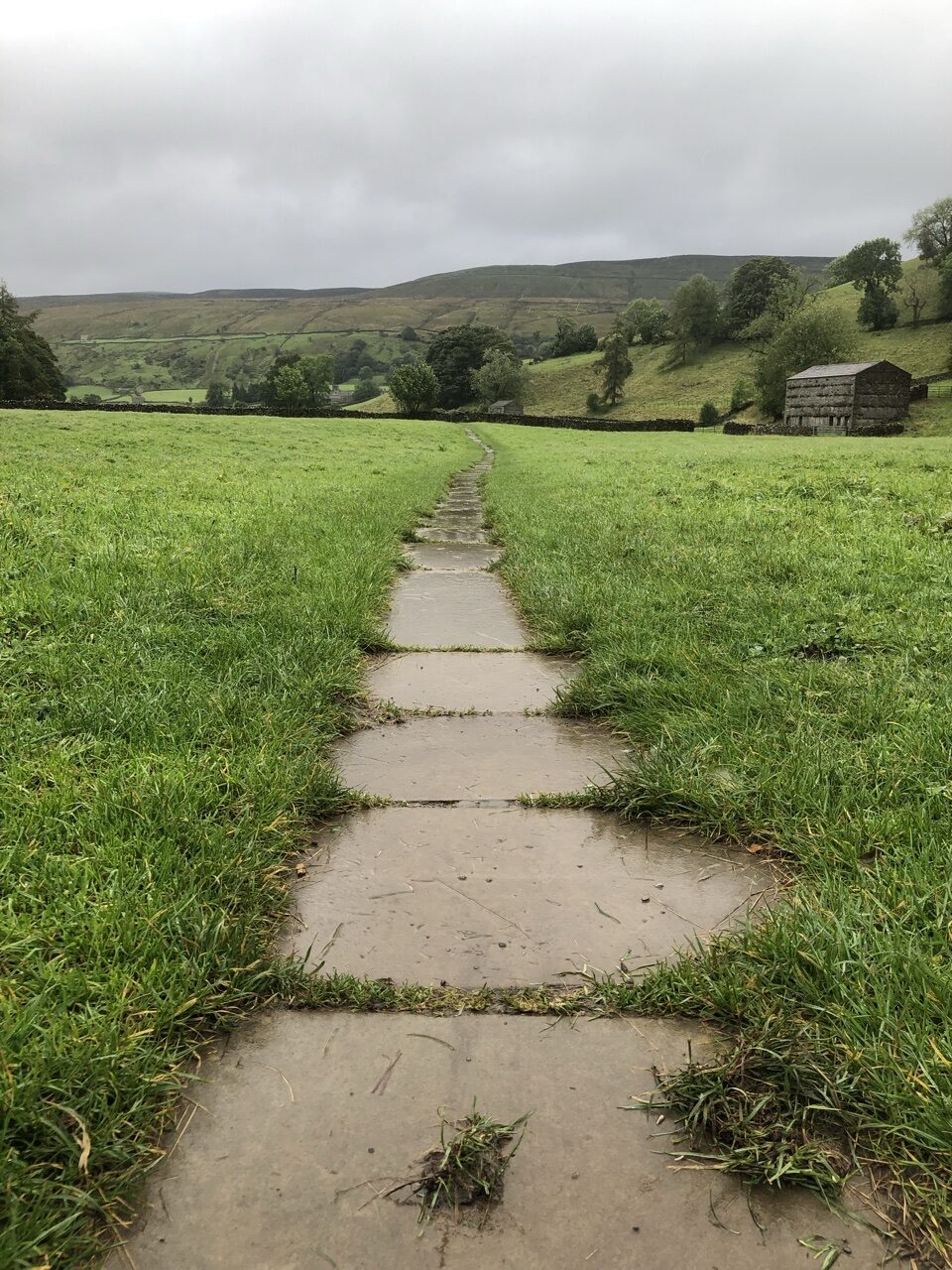
As we left the pasture, we entered into the small town of Muker. It felt like we had entered the twilight zone. Like Keld, all of the buildings were made of old stone. But the town of Muker gave an energy of being a place out of time. I felt transported into the past.
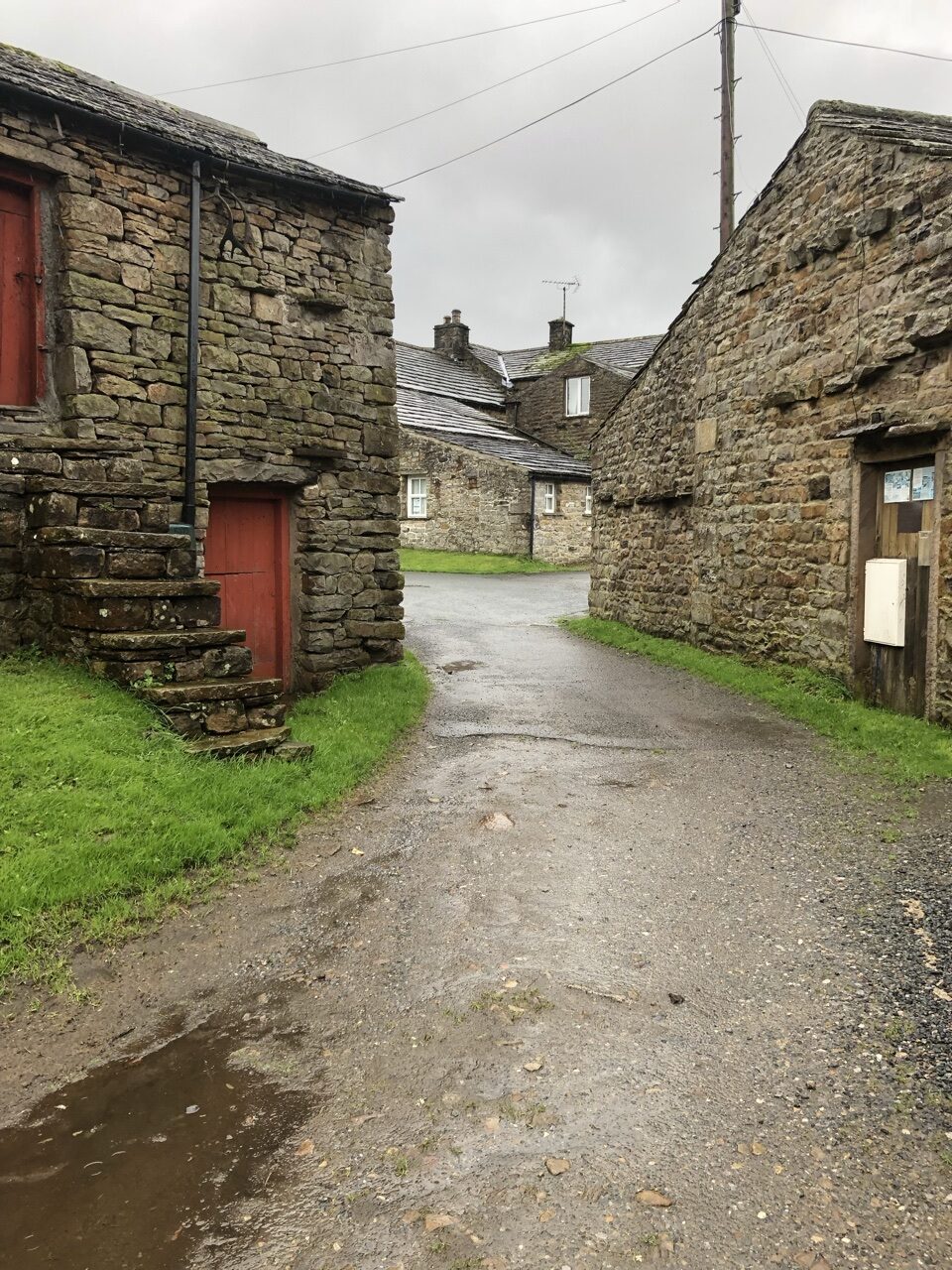
As the day was still young, we made our way down to the local pub. As we entered, a roaring fire blazed to our left, a sign of immediate warmth and welcome. We stripped off our wet outer gear, ordered a pint, and sat, listening to several gamekeepers talk about work. The best way to experience the culture of England is by walking into a remote, countryside pub.
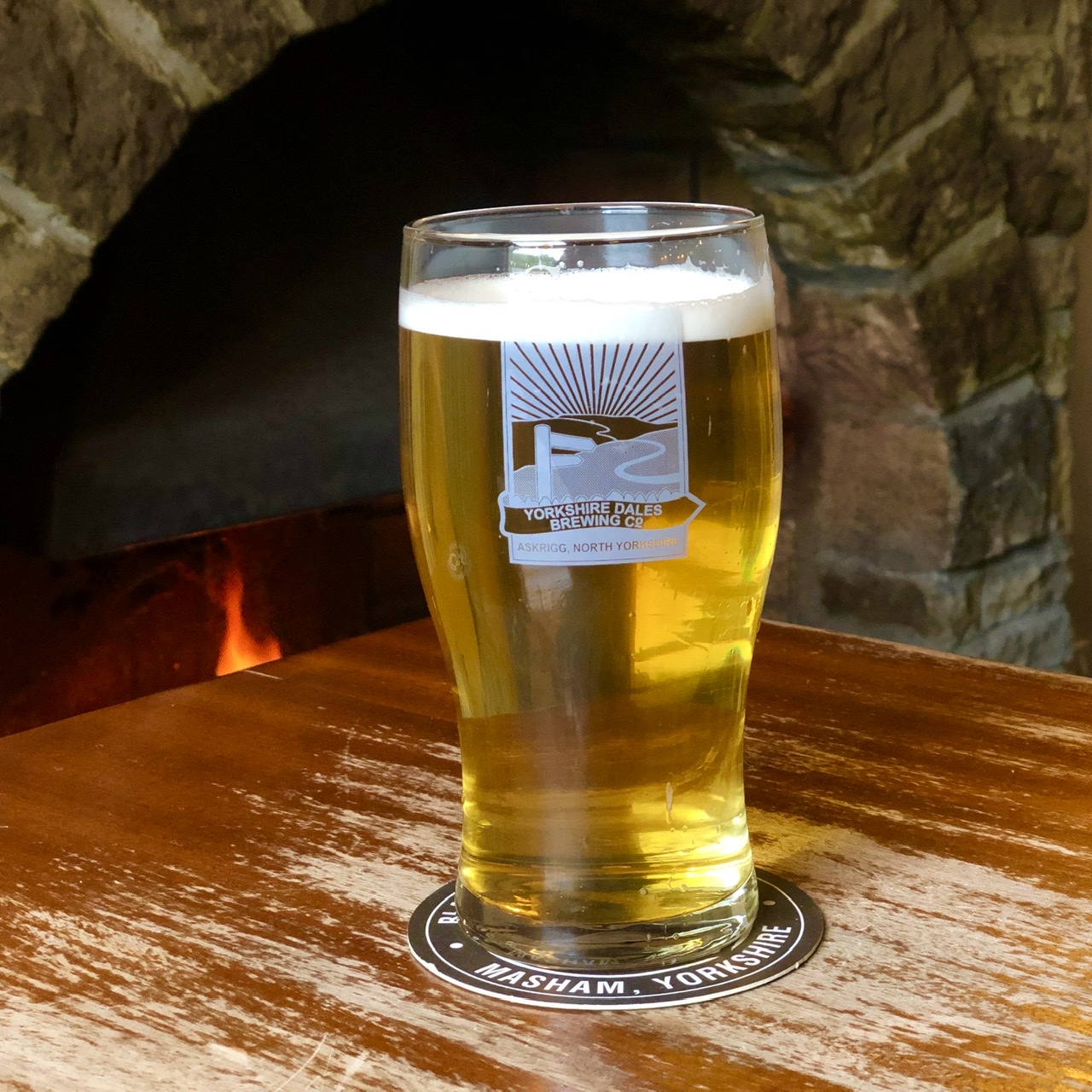
Til tomorrow 👋🏻
Missed any days? Check out my Coast to Coast blog for the rest of our two week adventure across England.
